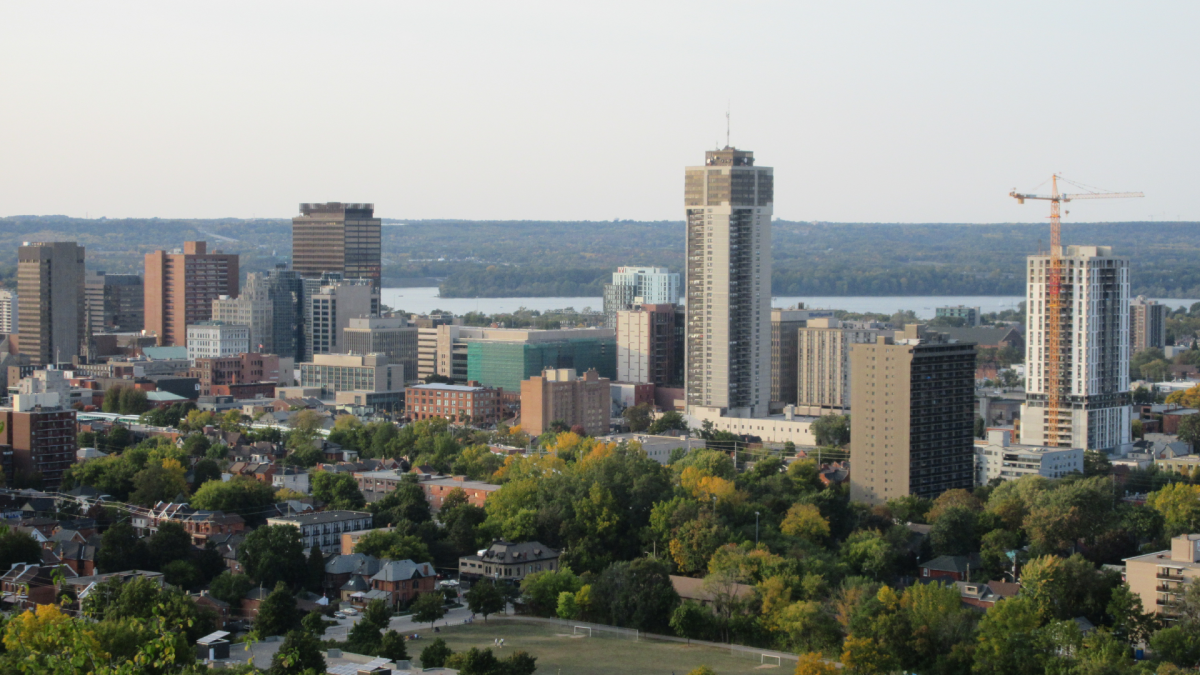An official with Hamilton Public Health is hoping a new pilot project will lead to a better understanding of how air pollution travels across the city.

In the next month, the city will launch an environment study monitoring real time “on the ground” air pollutant concentrations and meteorological conditions at the “hyperlocal” neighborhood level.
“So to start off, there will be two stationary sensors, as well as a routine mobile air monitoring sensors around the neighborhood,” Hamilton Public Health’s Trevor Imhoff told 900 CHML’s Good Morning Hamilton.
“It’s a 25-square-kilometre area and there will be two stationary air sensors taking in pollution concentrations, real time, as well as minimum monthly mobile routes across the neighborhoods.”
The experiment, estimated to cost around $25,000, will encompass mainly Ward 3 east of downtown and some of the downtown area in Ward 2, according to Imhoff.
Public health models suggest high concentrations of pollution in the study area which hosts three hospitals, 32 schools and 36 licensed residential care facilities.
Carbon monoxide, ozone, nitrogen dioxide and sulfur dioxide are some of the key compounds the research will be keeping an eye on with the intent of alerting the public of high concentrations and providing statistics to government regulators.
A recent study suggests a majority of Canadians live in parts of the country where air pollution exceeds new guidelines set by the World Health Organization, and this could damage health.
Analysts at CANUE — the Canadian Urban Environmental Health Research Consortium — estimate around 86 per cent of Canadians live in areas where airborne fine particulate matter levels exceed the WHO guidelines issued in late September.
The new guidelines recommend an annual average concentration of PM2.5 of five micrograms per cubic metre of air. PM2.5 refers to airborne particles so tiny that they can penetrate the lungs when you breathe and enter the bloodstream.
Around 56 per cent of people live in areas where the levels of nitrogen dioxide exceed the new guidelines, said Jeff Brook, an assistant professor in public health and chemical engineering and applied chemistry at the University of Toronto who works with CANUE.
- Buzz kill? Gen Z less interested in coffee than older Canadians, survey shows
- Naloxone-resistant street drug linked to 9 deaths in Eastern Canada seized in Alberta
- Bird flu risk to humans an ‘enormous concern,’ WHO says. Here’s what to know
- ‘She gets to be 10’: Ontario child’s heart donated to girl the same age
“We should care because we can do something about it,” said Brook, who is also a former air quality scientist for Environment Canada. “It is contributing to the costs of health care. It is affecting the quality of people’s lives.”
Currently, Ontarians can check regional air quality health indexes (AQHI) through an online portal that provides data via stations downtown, on the Mountain and in Hamilton West.
In simple terms, the AQHI is a measurement between one and 10 with the higher values representing the greater the level of air pollution and the greater the health concern.
Nitrogen dioxide (NO2), ground-level ozone (O3) and fine particulate matter (PM2.5) are the compounds the monitors pick up through monitoring devices. The AQHI does not measure odours, pollen, dust, heat or humidity.
Contingent on additional funding, Imhoff is hoping public health will be able to expand beyond the pilot to encompass the entire city in the future.
“Not very much the same program, but a different program that we would look at expanding across all wards in Hamilton,” said Imhoff.
— with files from Leslie Young









Comments